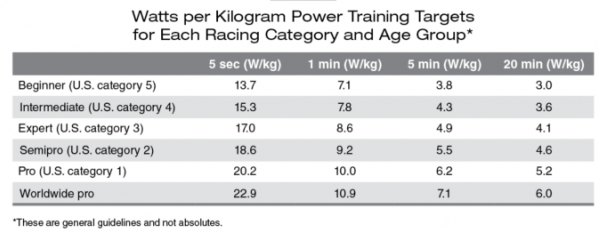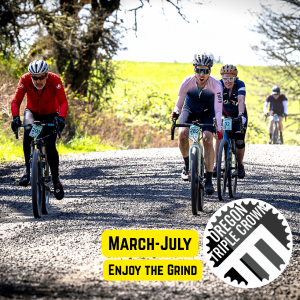The Importance of Watts per Kilogram
With the availability of power based training readily accessible to so many cyclists these days it’s becoming more and more important to understand what metrics one should focus on
While terms such as functional threshold power, intensity factor, training stress score and others often take over the conversation, there’s one metric that should be a focus for most athletes. Watts per kilogram is a dynamic metric that can be readily improved once you understand exactly what it is, and why it’s important to your goals as a cyclist. While there’s no denying that maximum power and threshold are important, W/Kg should be a primary metric on most riders’ dashboards.
Why is it Important?
The fact of the matter is if you’re riding on mostly flat terrain W/Kg isn’t overly important. When things are flat, the rider with the highest absolute power will most often be the fastest. However, many of the gran fondos and gravel races that athletes have on their calendars include some amount of climbing. Often times it’s the climbs that set the event apart from others on your schedule. So, with that in mind, W/Kg moves into the spotlight. While many power-based metrics in cycling can be very complex and need to be tracked over longer periods of time using varying intensities and durations, W/Kg is relatively straightforward to improve. There are three ways that you can alter your W/Kg.
- Increase your power output while keeping your weight constant.
- Keep your power output constant while decreasing your weight.
- Increase your power output while also decreasing your weight.
While any these three approaches may work well for you, it’s important to first identify which is the best and safest one to pursue. All three of these need to be properly integrated into a well planned training regiment and tracked in relation to other key metrics as you progress as a rider.

How to Train W/Kg
Before you begin to train W/Kg you’ll first need to calculate what your ratio currently is. It’s best to do several calculations for different ranges so that you can hone in on where you’re strongest and where there’s room for improvement. The four standard durations are 5 second, 1-minute, 5-minute, and FTP (Functional Threshold Power). These four durations not only correspond to different systems in the body, but also let you work on event specific efforts to make sure you’re building the correct strength in the right area. Let’s take a look at each approach to increasing your W/Kg and what you can do in your training to see those gains.
If you’re already at a healthy weight, and you need to increase your power to see improvement there’s a few ways to approach your training. One of the best ways to see an increase in power is to spend time off of the bike and in the gym. Strength training builds powerful muscle and helps to increase pedaling efficiency and form. Heavy resistance training of key cycling muscles (quadriceps, hamstrings, buttocks, and calves) not only boosts muscle efficiency, but it can also help prevent loss of power during high volume training and periods of weight loss. Strength training should be an integral part of all cyclists training, but particularly for those interested in increasing their power output. A basic strength routine might look like this.
- 3x6 front squats @ 70% max weight
- 3x6 back squats @ 75% max weight
- 3x10 explosive jump squats
- 3x10 (5 each side) weighted step ups
- 3x30 second plank holds
For most riders the place where near immediate gains can be seen is by losing fat and gaining lean muscle. If your aerobic capacity stays the same, but you lose weight, you’ll see an increase in your W/Kg. For most cyclists their cardiovascular system is already strong, however their nutrition may not be on track. A healthy diet in which calorie consumption is in line with calorie burn, meaning that you take in enough to fuel your activity, but not a surplus is the goal. If this is the best approach for you then proceed with caution, as you don’t want to get too light. The minimum body fat range for men is 6% and 14% for women. If you drop below these percentages your performance can be negatively impacted.
If you want to see big gains, and you have the weight to lose, you can increase both your power and decrease your weight. As mentioned above a proper diet should be the first approach for finding your healthy weight. After you find balance between your training and diet you can integrate certain workouts to ensure you’re getting the most out of your time on the bike. Steady state rides at or slightly below your FTP can be a great way to build sustained power for long climbs. Try working in 3x20 minutes @ 90%-95% of FTP with 10 minutes recovery between each interval into your next long endurance ride. If your goal is greater oxygen uptake (VO2 Max) 5-minute efforts are a great way to improve this area. 6x5 minutes @ 105%-110% of FTP with 3 minute recovery between each interval can produce big gains. Knowing what duration to focus on and what workouts to complete to develop that duration are key in maximizing your time and potential.
Power based training, while its exactness provides excellent insights, it can also be hard to decipher what metrics are important. Every athlete is different, thus the metrics that they should focus on are different. W/Kg allows for athletes and coaches alike to focus on specific durations and aerobic systems that best align themselves with the rider’s goals. Remember to first identify the approach that will work best for you, as well as what your current W/Kg are for the four main durations. Once you’ve honed in on where it is you’d like to improve, integrate the workouts and strength sessions that correspond to your goals. By using a dynamic metric like watts per kilogram in concert with other power-based metrics you’re able to quickly dial in your individualized approach to training.




 Sun Jan 18 - 4am, 9am, 3pm EST
Sun Jan 18 - 4am, 9am, 3pm EST







